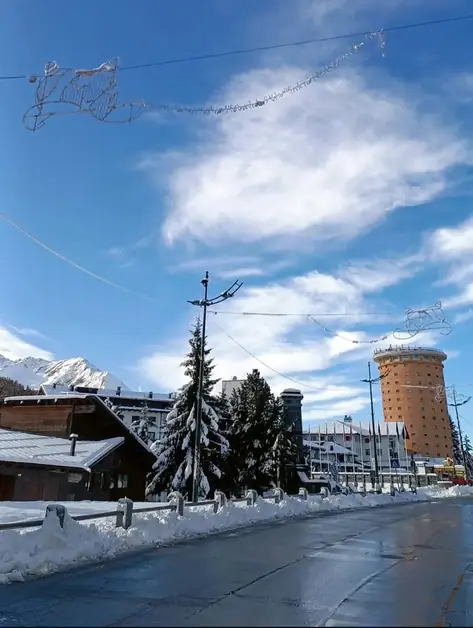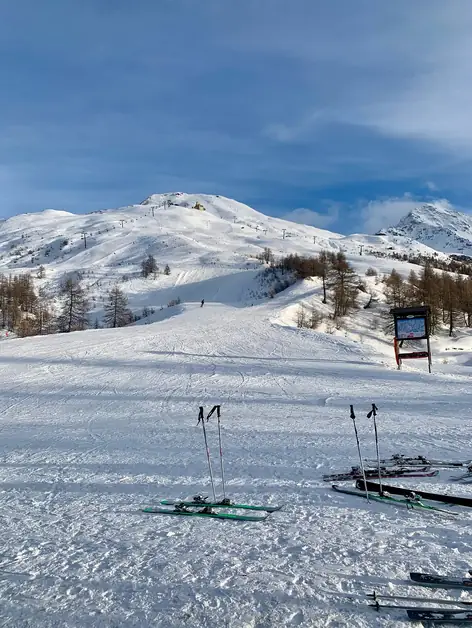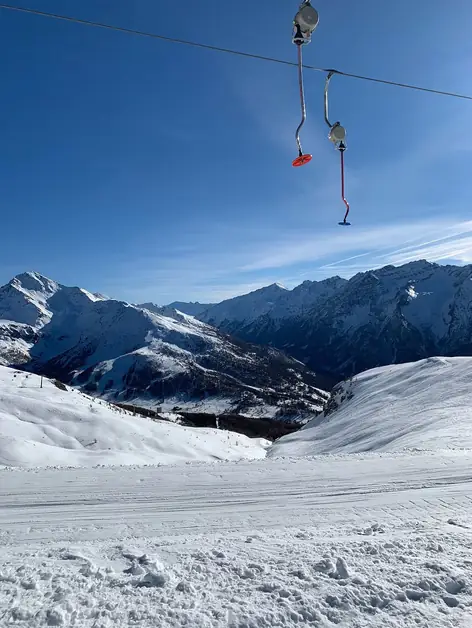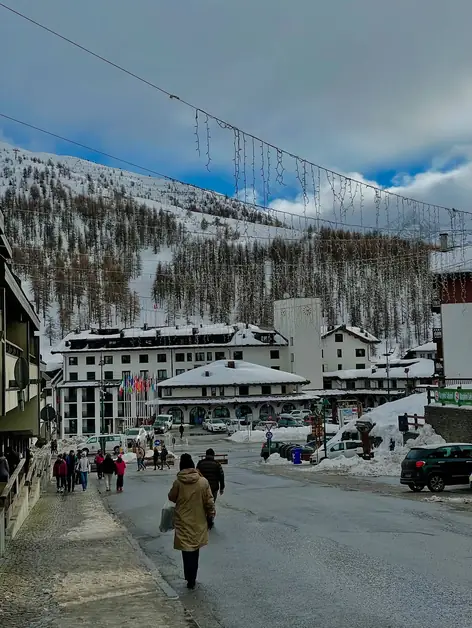Sestriere between sports nature and history to discover
Sestriere is an ideal destination for sports and nature, with history and beauty to discover.

Where is Sestriere and why is it a unique destination in Piedmont?
Sestriere is located in the heart of the Piedmont Alps, on the border between the Val Chisone and the Susa Valley, at over 2000 meters above sea level. With its 2035 meters above sea level, it is one of the highest municipalities in Italy, known worldwide for its ski slopes, breathtaking views, and international-level tourist facilities.
Why is Sestriere called that?
What is the origin of the name?
The name comes from the Latin Petra Sextreria, meaning the "sixth milestone" along the Roman road connecting Turin to France. A historical detail that tells how important this area was for the ancient Romans as a strategic crossing point.
How big is Sestriere and how many inhabitants does it have?
Today Sestriere has about 900 residents, but in high season the number grows exponentially due to tourists arriving from all over Europe. It is a small but welcoming location, ideal for those seeking relaxation, sports, and nature.
---
A village born from Agnelli's dream
Who founded Sestriere and when?
The modern history of Sestriere began in 1934 when the village was established as a municipality by Royal Decree, uniting territories of Pragelato, Champlas du Col, and Sauze di Cesana. However, its tourist development had already begun a few years earlier thanks to Senator Giovanni Agnelli, founder of FIAT.
Why did Agnelli choose Sestriere for his project?
In the 1920s, Agnelli purchased the entire area for only 40 cents per square meter. His goal was to create a modern ski resort capable of attracting Italian and foreign tourists. He built ski lifts, cable cars, and two hotels in rationalist style, the famous Towers of Sestriere.
Who designed the Towers and why are they famous?
Architect Vittorio Bonadè Bottino was the author of the Towers, still today a symbol of the town. These two cylindrical buildings, one light and one dark, are a masterpiece of modern alpine architecture: equipped with internal spiral ramps and a hydraulic system designed to withstand the cold, they represent an icon of design and engineering.
---
From past difficulties to rebirth
What happened to Sestriere during World War II?
The war events hit the area hard: the ski facilities were damaged and tourists disappeared. But in the post-war period, Sestriere managed to be reborn, once again focusing on winter tourism and organizing major sporting events.
What major sporting events have taken place in Sestriere?
In the 1960s and 1970s, Sestriere hosted international alpine skiing and athletics competitions. It then became the venue for stages of the Ski World Cup, the World Championships in 1997, and the 2006 Winter Olympics in Turin. Today it is considered one of the world capitals of skiing.
What other sports can be practiced besides skiing?
In summer, golf takes center stage: the 18-hole course in Sestriere is the highest in Europe. But trekking, mountain biking, climbing, and nature walks among spectacular alpine landscapes can also be practiced.
---
The Via Lattea district
What is the Via Lattea and which locations does it include?
The Via Lattea is one of the largest ski areas in Europe: a collection of over 400 kilometers of slopes connecting Sestriere to Sauze d’Oulx, Cesana, Sansicario, Pragelato, Oulx, and Montgenèvre in France.
What are the most famous slopes in Sestriere?
Among the most famous slopes is the Kandahar Slalom-Giovanni Alberto Agnelli, where World Cup races have taken place. It is a technical, panoramic slope loved by the most experienced skiers.
Is it possible to ski at night?
Yes, Sestriere offers illuminated slopes for night skiing, a unique experience for those who want to experience the magic of the mountain under the stars.
---
What to see in Sestriere besides skiing
What to see at the Colle di Sestriere?
The Colle is the heart of the location: from here you can admire the Towers and the Church of Sant’Edoardo, two absolute symbols. The Towers represent modernity, while the church tells the spiritual and family side of the village's history.
Who wanted the construction of the Church of Sant’Edoardo and why?
It was Senator Agnelli who wanted it, in memory of his father Edoardo, who died in a plane crash. The building, also designed by Bonadè Bottino, is in pseudo-Romanesque style and built with local stone.
What works of art does the Church of Sant’Edoardo hold?
Inside, there are works by renowned artists: a bronze door by Arturo Dazzi with figures of the Agnelli children, a statue of the Virgin Mary by Edoardo Rubino, a Via Crucis by Francesco Messina, and the Virgin of Welcome by Tonino Scuccimarra.
---
Discovering the surroundings of Sestriere
What to see in Champlas du Col?
A few minutes from the center, Champlas du Col preserves the Church of Sant’Antonio Abate, dating back to the 12th century but rebuilt in 1839. Inside, there is a baroque pulpit from 1747 and a wooden altarpiece from the 17th century.
Are there panoramic hiking trails in Sestriere?
Yes, many. In summer, you can walk trails towards Monte Fraiteve, Monte Banchetta, or Val Troncea, ideal for hikers of all levels. In autumn, the woods turn warm colors, making every walk an unforgettable photographic experience.
What views can be admired from Sestriere?
From the surrounding peaks, you can dominate the entire western alpine chain, with views extending to Monviso. At sunset, the light colors the mountains in pink and gold, offering a natural spectacle worth the trip.
---
Sestriere today: between tradition and modernity
What is Sestriere like today for visitors?
Today Sestriere is a perfect destination for every season: in winter it is synonymous with snow and sports, in summer it becomes a refuge of peace and nature. Its modern structures coexist with an authentic mountain landscape, made of silence, views, and high-altitude scents.
Where to sleep and eat in Sestriere?
The location offers a wide choice of hotels, residences, and chalets, many of which have direct views of the slopes. Piedmontese cuisine is the star in restaurants and refuges: polenta, mountain cheeses, game, and wines from the Val di Susa make every stop a pleasure.
Why visit Sestriere even off-season?
Because its atmosphere changes but never loses charm. In summer it offers clear skies and fresh air, in autumn it provides silence and colors, and in winter the snow transforms everything into a fairy-tale landscape.




